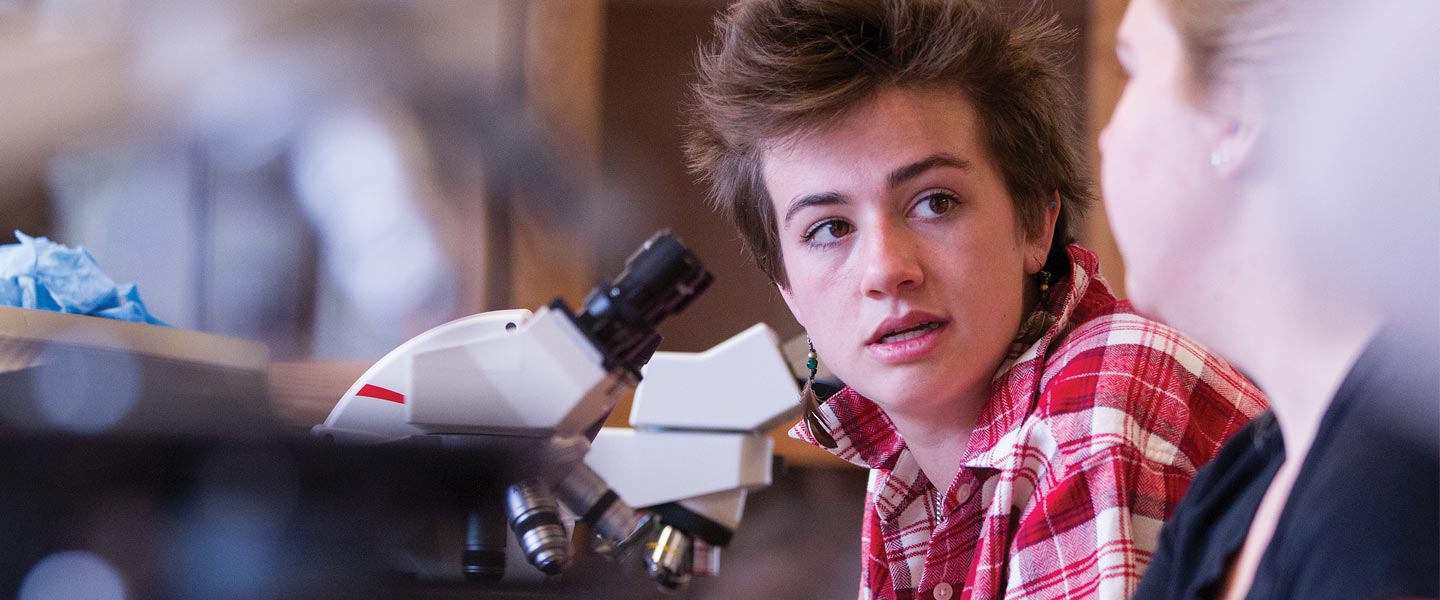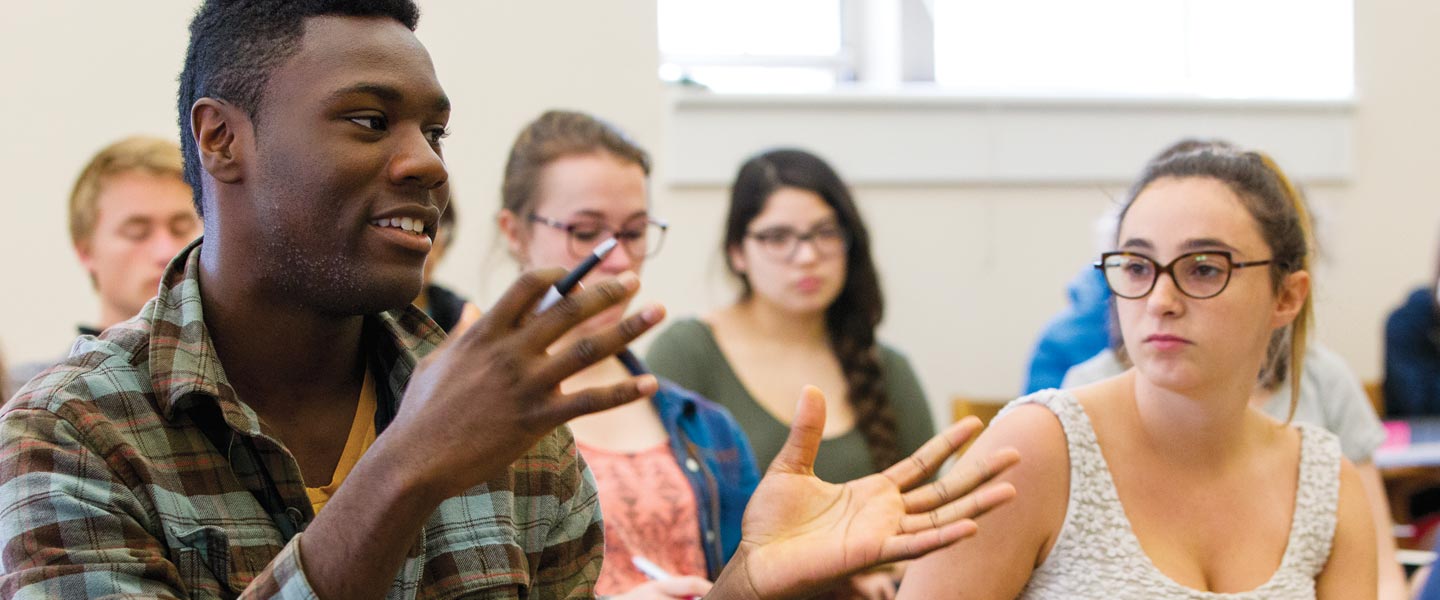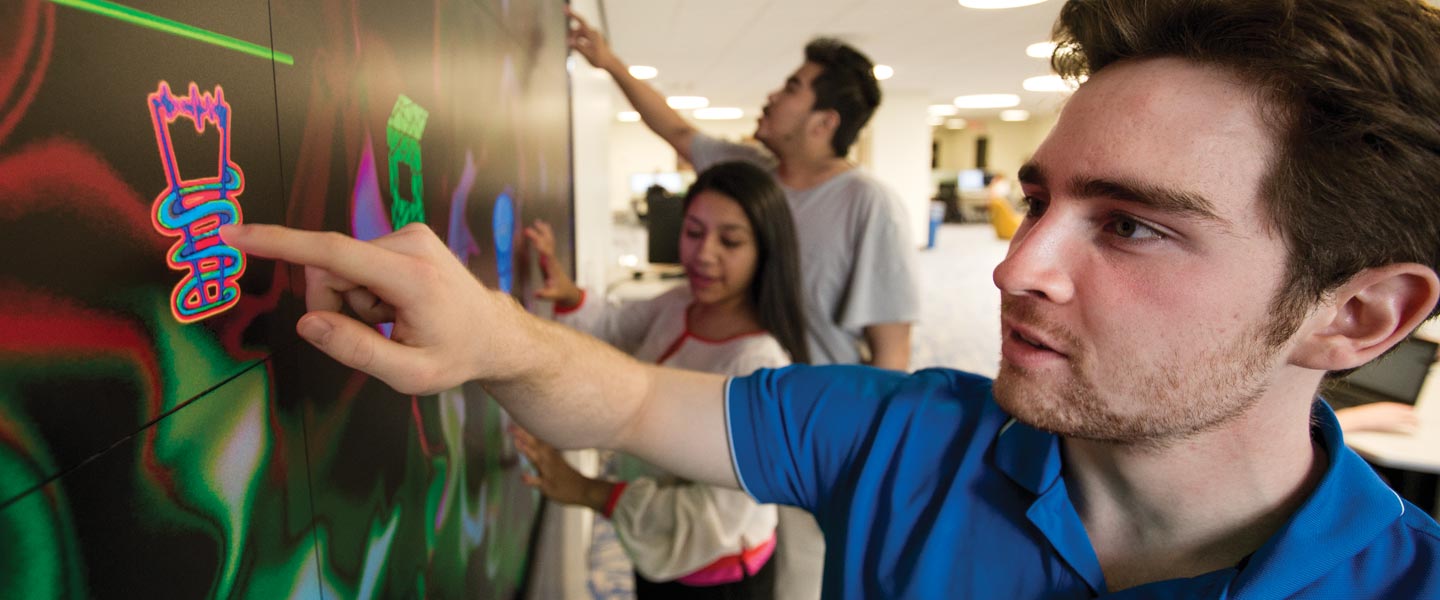Sidebar
Shared governance wins the day
The final components of the Connections curriculum were officially adopted through a faculty vote on May 14, 2015, but the foundation of a new general curriculum had been built in the years — even decades — prior.
The College’s previous General Education program was established in 1973, with few changes in the years to follow. (One significant change came in 2004, as first-year seminars were introduced.) But it wasn’t for lack of trying; several efforts to revamp the College’s curriculum failed due to lack of support from the campus community.
For this new effort to succeed, it was clear to all involved that reshaping the curriculum would require a massive undertaking — and buy-in from the entire College community.
“We’re talking about changing who we are as a college,” said Ross Morin ’05, assistant professor of film studies. “It wasn’t going to be a top-down process; it was going to take everyone.”
Morin was part of a team of six faculty members who spent the summer of 2013 working around the clock to draft a report on how a new curriculum might fit into Connecticut College’s liberal arts education. This was one of seven working groups, two delegations, two pilot groups, and countless formal and informal committees that helped shape the new curriculum and drive the approval process forward.
An even broader cross-section of the College community joined in the process during Curriculum reVision Week in early 2014, with students, faculty and staff gathering in small groups and larger town hall-style forums. Pilots were launched in the 2014-15 academic year, testing the effectiveness of proposed team advising integrated with first-year seminars.
Even as this work was taking place, faculty were debating and voting on individual components of the curriculum throughout the 2014-2015 academic year, approving five separate motions at monthly faculty meetings, with the final vote in May 2015.
But while investing countless hours and securing multiple votes may have appeared a painstaking process from the outside, the process was built on the principles of shared governance, one of the College’s founding values. Because perspectives from students, faculty, staff, alumni and parents were all considered in the decision-making process, the finished product serves the interests of the entire College community.
“We needed to make sure the final result was something everyone believed in,” said Abby Van Slyck, dean of the faculty and Dayton Professor of Art History. “The back-and-forth discussions were crucial, and input was met receptively, not defensively. The conversation modeled the kind of passionate but civil discourse we want our students to engage in throughout their lives.”
Kevin Saunders ’15 served as a student representative on the Educational Planning Committee and said he was inspired to leave a lasting impact on the College. “The new curriculum will offer a unique learning experience that will enhance the liberal arts education,” said Saunders. “It’s a legacy that I’m very proud to leave behind.”



